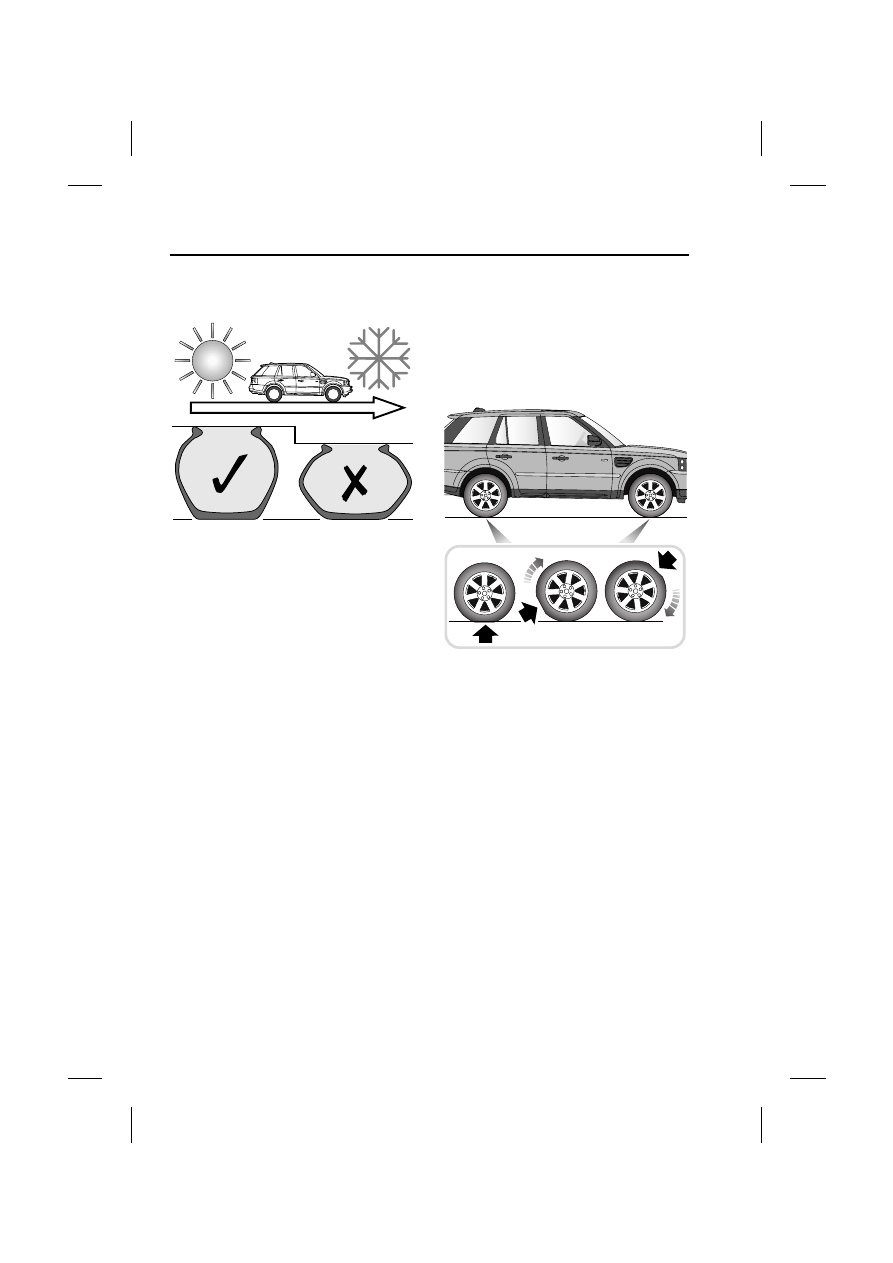Frelander 2. Manual - part 726

Wheels and tyres
182
L
Pressure compensation for ambient
temperature changes
If the ambient temperature drops, the tyre
pressures will decrease, which may cause
under inflation. This should be borne in mind
when travelling to, or through, areas of lower
temperature.
Under inflation causes the tyre side wall height
to reduce, which in turn results in uneven tyre
wear, and a risk of tyre failure.
Tyre pressures may be adjusted before setting
off on a journey to, or through, areas of low
temperature. Alternatively, the tyre pressures
can be adjusted when low temperature areas
are reached.
Note: If the tyre pressures are to be adjusted in
the lower temperature area, the vehicle should
be left standing for at least one hour prior to
adjustment.
Tyre pressures should be increased by 0.14
bar/14 kPa (2 lbf/in²) for each 10 °C (20 °F)
temperature decrease.
Flat spots
If the vehicle is stationary for a long period
when the ambient temperature is high, the
tyres may form flat spots. When the vehicle is
driven these flat spots will cause a vibration
which will steadily disappear as the tyres warm
up and regain their original shape.
In order to minimise flat spotting, the tyre
pressures can be increased.
Tyre pressures should be increased by 0.14
bar/14 kPa (2 lbf/in²) for each 10 °C (20 °F)
temperature increase above 20 °C (68 °F).
Long term storage
Flat spotting can be minimised during long
term storage by increasing the tyre pressures
to the maximum indicated on the tyre sidewall.
Note: The tyre pressures should be reduced to
the correct pressure before the vehicle is
driven.
E80321
E80322